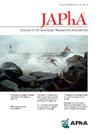Pilot of interactive texting for diabetes self-management education and support
IF 2.5
4区 医学
Q3 PHARMACOLOGY & PHARMACY
Journal of the American Pharmacists Association
Pub Date : 2025-04-22
DOI:10.1016/j.japh.2025.102403
引用次数: 0
Abstract
Background
Controlling type 2 diabetes requires medication adherence, monitoring blood sugar, weight management, and dietary and physical activity behaviors. Estimates link a 1% reduction in hemoglobin A1c (HbA1c) to up to a 40% decrease in complications. Accessible supports for self-management behaviors can help increase adherence and lower HbA1c. However, uninsured and low-income populations may experience unique self-management challenges and have limited access to self-management supports.
Objectives
To assess the feasibility, acceptability, and preliminary effectiveness of a pharmacist-driven 6-month pilot intervention to support diabetes self-management behaviors utilizing text messages among uninsured and underinsured patients with uncontrolled diabetes.
Methods
Eligible participants were English or Spanish-speaking patients at a Federally Qualified Health Center in Northern Illinois who had poorly controlled type 2 diabetes (HbA1c > 7) and access to a smartphone. Participants' HbA1c was measured at enrollment and upon completion. Interactive and informational messages were sent to participants using a secure text-messaging application. Messages included explanations, encouragement, and problem-solving suggestions. Message frequency was tapered to withdraw support gradually. Message engagement was tracked within the text-messaging software.
Results
Electronic medical records identified 192 eligible patients with type 2 diabetes, of whom 76 consented to enroll in the intervention. Mean HbA1c at enrollment was 9.3%. Engagement with messages did not vary by demographic or clinical characteristics. Of 75 participants in the analytic sample, 60 completed the postintervention HbA1c measurement. Thirty-five (58.3%) had clinically significant reductions in their HbA1c, and 16 (26.7%) reduced their HbA1c to under 7%, which is considered controlled. Smaller groups saw either HbA1c decreases of less than 0.5% (n = 8, 13.3%), no change (n = 3, 5.0%), or increases (n = 14, 23.3%).
Conclusion
This feasible and low-cost pilot intervention utilizing pharmacist services helped a large portion of patients attain a clinically significant reduction in their HbA1c and contributed to some individuals achieving blood sugar control.
互动短信对糖尿病自我管理教育和支持的试点。
背景:控制2型糖尿病需要药物依从性、血糖监测、体重管理、饮食和体育活动行为。据估计,HbA1c降低1%,并发症减少40%。可获得的自我管理行为支持有助于提高依从性和降低HbA1c。然而,没有保险和低收入人群可能会遇到独特的自我管理挑战,获得自我管理支持的机会有限。目的:评估药剂师主导的6个月试点干预的可行性、可接受性和初步有效性,以支持未参保和参保不足的未控制糖尿病患者利用短信进行糖尿病自我管理行为。方法:符合条件的参与者是伊利诺斯州北部联邦合格健康中心的英语或西班牙语患者,他们患有控制不佳的2型糖尿病(HbA1c bb70),并且可以使用智能手机。在入组时和完成时测量参与者的HbA1c。互动和信息信息通过安全的短信应用程序发送给参与者。信息包括解释、鼓励和解决问题的建议。消息频率逐渐减少,以逐步撤回支持。使用短信软件跟踪信息的使用情况。结果:电子医疗记录确定了192名符合条件的2型糖尿病患者,其中76人同意参加干预。入组时平均HbA1c为9.3%。与信息的接触没有因人口统计学或临床特征而变化。在分析样本的75名参与者中,60名完成了干预后的HbA1c测量。35例(58.3%)患者的HbA1c有临床显著降低,16例(26.7%)患者的HbA1c降至7%以下,这被认为是控制的。较小的组HbA1c降低小于0.5% (n=8, 13.3%),无变化(n=3, 5.0%)或升高(n=14, 23.3%)。结论:利用药师服务,这种可行且低成本的试点干预帮助大部分患者实现了临床显著的HbA1c降低,并有助于部分患者实现血糖控制。
本文章由计算机程序翻译,如有差异,请以英文原文为准。
求助全文
约1分钟内获得全文
求助全文
来源期刊
CiteScore
3.30
自引率
14.30%
发文量
336
审稿时长
46 days
期刊介绍:
The Journal of the American Pharmacists Association is the official peer-reviewed journal of the American Pharmacists Association (APhA), providing information on pharmaceutical care, drug therapy, diseases and other health issues, trends in pharmacy practice and therapeutics, informed opinion, and original research. JAPhA publishes original research, reviews, experiences, and opinion articles that link science to contemporary pharmacy practice to improve patient care.

 求助内容:
求助内容: 应助结果提醒方式:
应助结果提醒方式:


